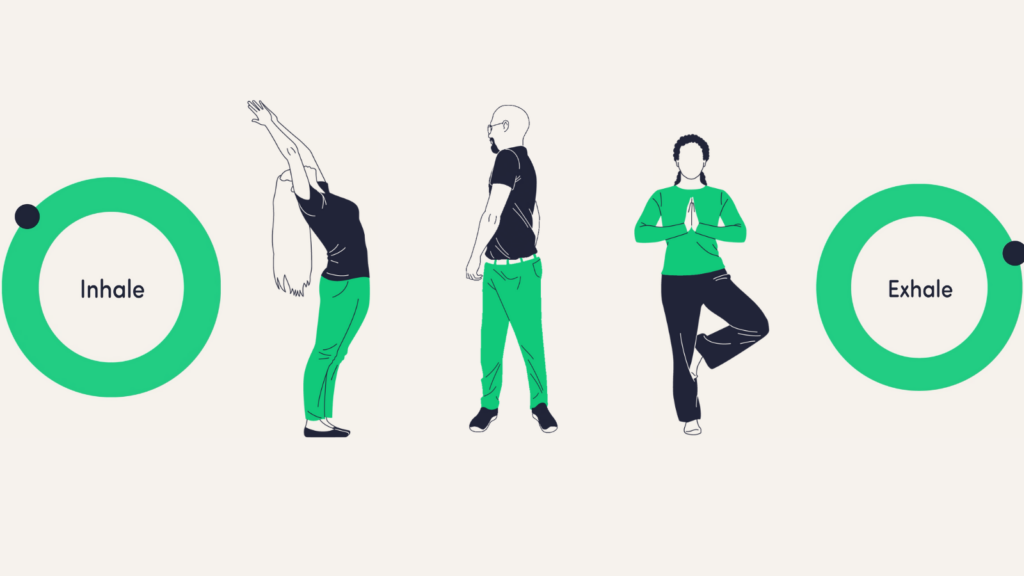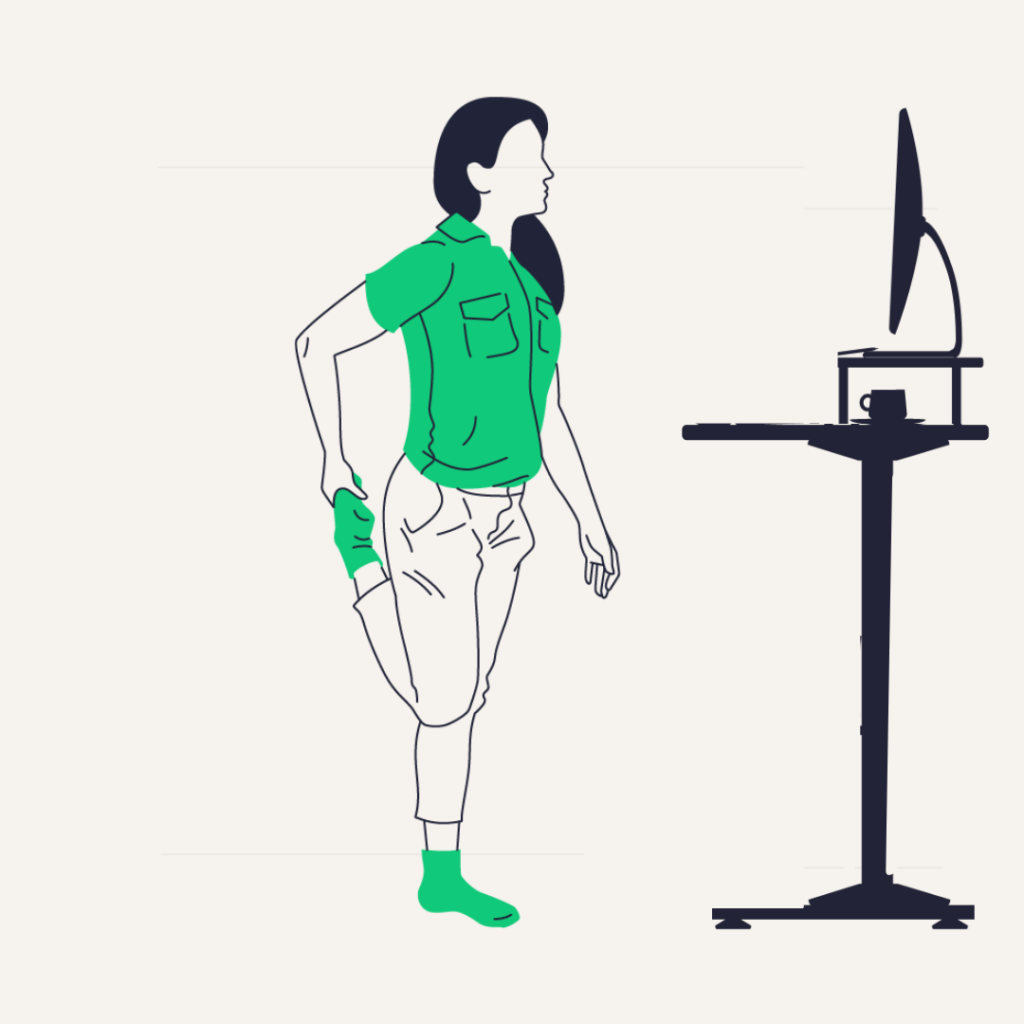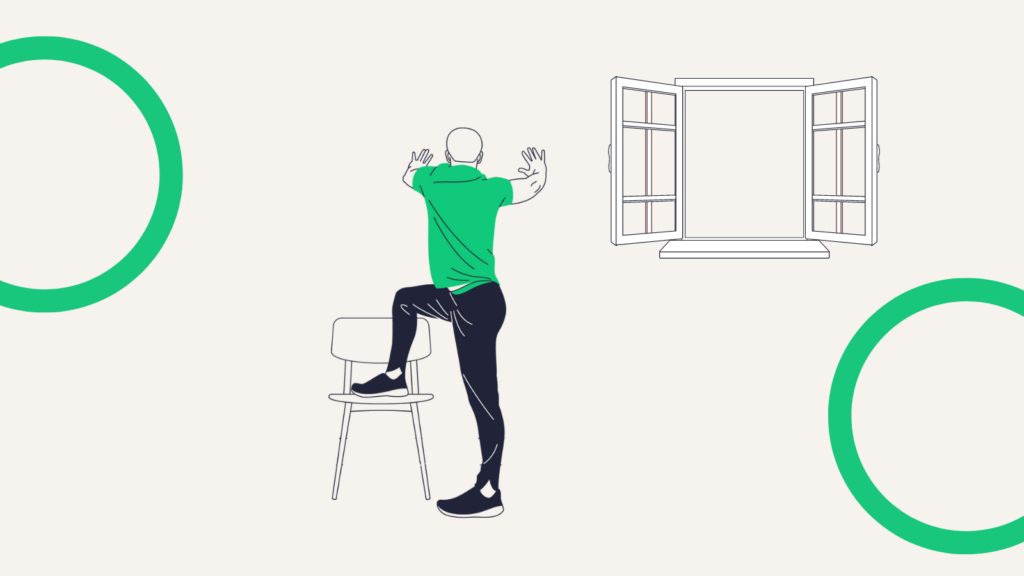In today’s fast-paced multimedia multitasking world, it’s easy to become overwhelmed by the demands of daily life and to neglect our physical and mental health while juggling work, family, social commitments and social media. Scientific studies have shown that a sedentary lifestyle increases the risk of mental health issues, and that incorporating some movement into our daily routine can have significant benefits for mind as well as body, improving mood, reducing symptoms of stress, anxiety and depression, enhancing cognitive function, and improving sleep.
We look at the 6 ways that exercise helps mental wellbeing and themes around how this could apply to desk workers:
Table of Contents
The science
There are several ways in which physical movement can support mental wellbeing:
- Mood enhancement: Engaging in physical activity stimulates the release of endorphins, which are neurotransmitters that promote feelings of happiness and well-being. Exercise can help alleviate symptoms of depression and anxiety, boost mood, and enhance overall emotional state.
- Stress reduction: Physical activity acts as a stress reliever by reducing the levels of stress hormones, such as cortisol, and increasing the production of endorphins. Regular exercise can help manage stress and improve the body’s ability to cope with stressors.
- Cognitive function improvement: Physical activity has been shown to enhance cognitive function and improve memory, attention, and overall mental performance. Exercise increases blood flow to the brain, promotes the growth of new neurons, and enhances the connections between brain cells.
- Anxiety and depression management: Regular exercise has been found to be effective in reducing symptoms of anxiety and depression. It can provide a sense of accomplishment, boost self-esteem, distract from negative thoughts, and promote social interactions—all of which contribute to improved mental well-being.
- Sleep quality: Engaging in physical activity during the day can improve sleep quality and help regulate sleep patterns. Better sleep, in turn, can have a positive impact on mental health, including mood, concentration, and overall cognitive function.
- Body image and self-perception: Regular physical activity can help improve body image and self-perception. It can increase self-confidence, promote a sense of empowerment, and contribute to a positive relationship with one’s body.
Workplace culture
From the employer’s viewpoint, the main area of focus will be how desk workers can be encouraged to incorporate movement into their working day and how the “right to move” can be embedded into the working culture and included within employee wellbeing programmes.
Thankfully, the days of desk based workers being expected to stay static at their workstation and logged in for most of the working day with little ability to take breaks are long gone in most organisations. Alongside increased mental health awareness, there is recognition that stretching and moving at the desk is healthy and normal, and that productivity can be increased rather than decreased by short breaks, particularly if the break includes some movement.
But just because active breaks are allowed, that doesn’t mean that they happen. Some desk based workers may get so absorbed in their tasks that hours fly by unnoticed. Others may feel embarrassed about taking a break or about stretching and moving in front of others. So, how can busy desk workers be encouraged and supported to incorporate movement into their daily routine? The key is to find ways to make movement an integral part of the day and to remember that if there isn’t enough time for longer sessions, taking small exercise “snacks” throughout the day can still produce meaningful benefits for mental health and perceived wellbeing.
Walking
Taking steps – for many, walking will be an easy form of movement to incorporate into a working day. For some desk workers a short walking break could be a great way to clear the head after a difficult phone call or completing a complex task, for others a longer walk at lunchtime will be a better option. Some may be able to include walking during their commute to the office and others to go for a walk to mark the transition between work and home life when working from home.
It is also worth looking at how your office space impacts employee well-being. Where possible and appropriate, employers can design working practices and environments to support a culture of walking within and outside the office, including walking meetings and walking phone calls. Some provide fitness apps or devices for employees to monitor their step count and may find that a daily target of 5,000, being the threshold to be classed as non-sedentary is a more realistic goal for desk workers than the typically quoted 10,000. Steps can be spread through the day and can include walking or marching on the spot for a few minutes if time is short.
Yoga breaks
Too much time at the desk can cause musculoskeletal issues such as tension held in the neck and shoulders, stiffness and discomfort, poor posture, reduced flexibility, loss of strength in the major muscle groups and restricted breathing due to compression of the chest area.
Any of these factors can of course increase feelings of pressure and stress, and often when sitting for too long we start to feel dull, flat and low in energy which results in a reduction in motivation for physical activity and creates a vicious circle.
Bringing even a small amount of yoga based movement or stretching into the working day can help to protect against potential physical issues and provide significant psychological benefits, making the desk worker feel more self-aware, more in control and less restricted/constrained.
Depending on the objective and the time of day, yoga poses and exercises can help the practitioner to feel grounded, calmer and more relaxed or energised, refreshed and more focussed – could your employee wellbeing initiatives include some resources to provide suggestions and guidance? The “Feelings focus” in our Pose library is designed to help the individual to identify what would best help them in the moment and to reinforce the min-body connection.
Our 5 day course Dialling down stress includes suggestions for movement, lifestyle tips and breathing practices that can be easily incorporated into a busy day.

Standing desks
Standing desks are offered by many employers – mainly for the physical benefits, namely that standing can help to burn more calories and to improve posture and that switching between standing and sitting introduces a small amount of movement and muscle activation. There is some evidence that standing desks can also help to improve mental wellbeing through the energising effect of standing, the feeling of being more in control of the working environment and by making it easier to release tension by shifting position and moving while at the desk. Our Standing desk sequence gives some ideas on how the benefits of standing desks can be geared up with additional movement.

In conclusion, scientific studies have shown that movement is an essential component for maintaining good mental health and this is especially important for sedentary workers. There are numerous ways that employee wellbeing programs can encourage workers to move more, to help improve mood, lower the risk of stress and reduce feelings of anxiety. When considering the ways that the employer can support the mental wellbeing of employees, encouraging and supporting movement, particularly during the working day, should be considered as a key part of the equation.
Helen Withers, Director, YoPO Wellbeing Limited
If you would like any further information on this update or to request access for your employee wellness programme to YoPO’s resource bank of practical and accessible suggestions for movement for desk workers please contact hello@yoponow.com.
References
- Mammen, G., & Faulkner, G. (2013). Physical activity and the prevention of depression: A systematic review of prospective studies. American Journal of Preventive Medicine, 45(5), 649-657. doi:10.1016/j.amepre.2013.08.001
- Cotman, C. W., & Berchtold, N. C. (2002). Exercise: A behavioral intervention to enhance brain health and plasticity. Trends in Neurosciences, 25(6), 295-301. doi:10.1016/s0166-2236(02)02143-4
- Kredlow, M. A., Capozzoli, M. C., Hearon, B. A., Calkins, A. W., & Otto, M. W. (2015). The effects of physical activity on sleep: A meta-analytic review. Journal of Behavioral Medicine, 38(3), 427-449. doi:10.1007/s10865-015-9617-6
- Mainsbridge CP, Cooley D, Dawkins S, de Salas K, Tong J, Schmidt MW and Pedersen SJ (2020) Taking a Stand for Office-Based Workers’ Mental Health: The Return of the Microbreak. Front. Public Health 8:215. doi: 10.3389/fpubh.2020.00215


